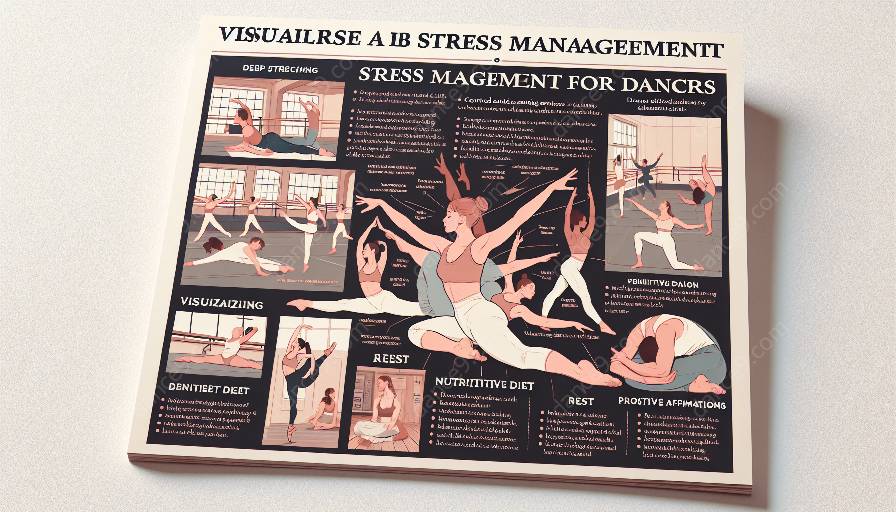Dance is a physically and mentally demanding art form that requires discipline, dedication, and resilience. As such, dancers often face significant stressors that can impact their overall well-being. This topic cluster aims to explore the impact of stress on dancers' physical and mental health, as well as provide insights into effective stress management techniques tailored specifically for dancers.
The Impact of Stress on Dancers' Physical Health
Physical health is crucial for dancers as it directly affects their performance and longevity in the field. Stress can manifest in various physical symptoms such as muscle tension, fatigue, and increased risk of injury. The pressure to meet professional standards and perform at a high level can lead to overtraining, lack of sufficient rest, and poor nutrition, all of which contribute to physical stress on the body. Chronic stress can also weaken the immune system, making dancers more susceptible to illness and prolonged recovery periods.
The Impact of Stress on Dancers' Mental Health
Mental health is equally vital for dancers, as it influences their creativity, motivation, and emotional well-being. The intense competition, performance anxiety, and constant self-criticism can lead to high levels of psychological stress. Dancers may experience symptoms of anxiety, depression, or burnout, as they navigate the pressures of maintaining a perfect physique and excelling in their craft. Additionally, the uncertainty of a career in dance and the need to balance personal and professional life can take a toll on dancers' mental well-being.
Stress Management Techniques for Dancers
To support dancers in managing stress and promoting a balanced lifestyle, it is vital to provide tailored stress management techniques. These may include:
- 1. Mindfulness and Meditation: Encouraging dancers to engage in mindfulness practices and meditation can help reduce stress, improve focus, and enhance overall well-being. Mindfulness can also aid in managing performance anxiety and cultivating mental resilience.
- 2. Physical Recovery Strategies: Educating dancers about the importance of rest, proper nutrition, and injury prevention can mitigate the physical impact of stress. Incorporating restorative practices such as yoga, Pilates, and massage therapy can support muscular recovery and reduce tension.
- 3. Mental Health Support: Providing access to mental health resources, such as counseling and support groups, can offer dancers the opportunity to address psychological stressors and develop coping strategies. Creating a supportive environment that prioritizes open communication and destigmatizes mental health challenges is crucial.
Physical and Mental Health in Dance
Considering the unique demands of the dance profession, it is essential to prioritize both physical and mental health for dancers. Cultivating a holistic approach that integrates physical conditioning, mental resilience, and emotional well-being can contribute to longevity and success in the dance industry. By recognizing the impact of stress on dancers and implementing effective stress management techniques, the dance community can foster a culture of well-being and sustainable performance.


































